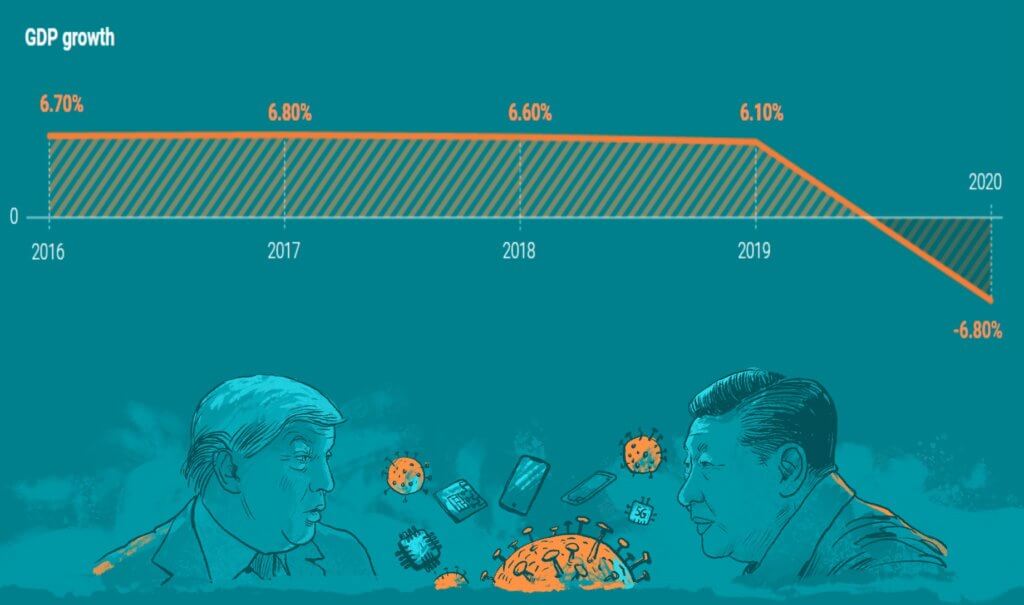[adrotate group=“15″]
China and the United States have long been rivals in terms of economy and technology. The rivalry between the United States and China is not a new dynamic. This contest between the two nations has been going on for over two years in fields such as politics, technology, military, and economy.
So it comes as no surprise that China has been actively investing in and researching new emerging technologies in order to speed up “speed up self-reliance and self-improvement in science and technology. This includes intensifying Chinese national strategic scientific and technological forces, as well as continuing to strengthen fundamental research, applied research, and scientific and technological achievements in transformation and commercialization, to further improve the country’s core competitiveness for industries,” according to Ning Jizhe, deputy head of the National Development and Reform Commission.
A 7% budget increase from China for emerging technologies
Premier Li Keqiang also confirmed in a speech at China’s annual parliamentary “Two Sessions” that China will increase its investments by 7% in research and development over the next five years in a move meant to accomplish “major breakthroughs” in technology.
This also translates as a decision to grow the financial support given to some of the technologies China considers to be the “frontier.” This includes quantum computing and semiconductors, two of the technologies in which China is fiercely competing with the United States.
There is also the question of the strength of the Chinese Yuan outside the country, as the currency is traded only within its borders. A financial commitment from the Chinese party might just lead to more impossible dreams, as the yuan has no parity with the almighty dollar. China does not have a free exchange rate that is defined by market forces. Rather, it secures its currency, the yuan (alternatively known as the renminbi), to the U.S. dollar. China can print money, but how long will it be until it’s just meaningless paper because of inflation and the lack of congruity?
China’s Five Year Tech Plan

For the past 5 years, China has been a frequent target of sanctions imposed by the U.S. Some of these include John S. McCain National Defense Authorization Act for Fiscal Year 2019 (NDAA 2019) which banned Huawei and ZTE equipment from being used by the U.S. Federal Government over security concerns, China’s exclusion from U.S. Government procurement contracts in 2019 after the United States Treasury designated it a currency manipulator and executive Order 13959 from 2020 that prohibits all U.S. investors from purchasing or investing in securities of companies that were identified as “Communist Chinese military companies” by the U.S. Department of Defense.
Beijing’s five-year development plan for science and technology to be self-reliant now makes sense in their strategy to develop the country even more. China’s decision to boosting its domestic expertise in strategic areas such as semiconductors might have also been affected by President Biden’s recently signed executive order which was prompted by the global concern over the semiconductor shortage. The order is aimed at improving domestic supply chains for critical domestic goods, including semiconductors since according to Senate Majority Leader Chuck Schumer, “semiconductor manufacturing is a dangerous weak spot in our economy and in our national security.”
China, not one to be left behind, has prioritized seven technologies for the next five years. These “frontier technologies” are artificial intelligence (AI), quantum information, brain science, integrated circuits or semiconductors, clinical medicine and health, genomics and biotechnology, deep sea, deep sea, polar regions, and deep space.
Why was 2020 “an extraordinary year in the history of New China”

“To improve China’s innovation system, we will work faster to enhance our strategic scientific and technological capability underpinned by the development of national laboratories, strive to make major breakthroughs in core technologies in key fields, and formulate and implement a ten-year action plan for basic research,” Prime minister Li Keqiang stated in his report.
According to official data from China’s National Bureau of Statistics for the year 2020, China’s research and technological development (R&D) spending went from 10.3% to 2.44 trillion Chinese yuan, the equivalent of $378 billion. This press release calls 2020 “an extraordinary year in the history of New China” and states that R&D spend accounted for 2.4% of China’s gross domestic product (GDP) making this a new record for the country.
RELATED ARTICLE: Facebook Bans Australia But Takes Chinese Money To Promote Uyghur Disinformation
Follow TechTheLead on Google News to get the news first.






















